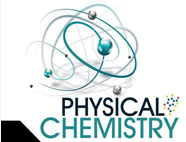


 علم الكيمياء
علم الكيمياء 
 الكيمياء التحليلية
الكيمياء التحليلية 
 الكيمياء الحياتية
الكيمياء الحياتية 
 الكيمياء العضوية
الكيمياء العضوية 
 الكيمياء الفيزيائية
الكيمياء الفيزيائية
 الكيمياء اللاعضوية
الكيمياء اللاعضوية 
 مواضيع اخرى في الكيمياء
مواضيع اخرى في الكيمياء
 الكيمياء الصناعية
الكيمياء الصناعية |
أقرأ أيضاً
التاريخ: 4-4-2017
التاريخ: 23-12-2021
التاريخ: 3-4-2017
التاريخ: 3-4-2017
|
Put yourself in these situations, regularly encountered by professional chemists:
• You notice an unexpected product from a chemical reaction. N O Cl NH Cl
• You discover a previously unknown compound in a plant extract.
• You detect a suspected food contaminant and need to know what it is.
• You are routinely checking purity during the manufacture of a drug.
In all cases, except perhaps the second, you would need a quick and reliable answer. Suppose
you are trying to identify the heart drug propranolol. You would fi rst want to know the molecular weight and atomic composition, and these would come from a mass spectrum: proprano
lol has a molecular weight (relative molecular mass) of 259 and the composition C16H21NO2.
Next you would need the carbon skeleton—this would come from NMR, which would reveal
the three fragments shown below.
There are many ways in which the fragments seen by NMR could be joined together and at this stage you would have no idea whether the oxygen atoms were present as OH groups or as ethers, whether the nitrogen would be an amine or not, and whether Y and Z might or might not be the same atom, say N. More information comes from the infrared spectrum, which highlights the functional groups, and which would show that there is an OH and an NH in the molecule but not other functional groups such as CN or NO2. This still leaves a variety of possible structures, and these could finally be distinguished by the details revealed by 1H NMR. We will deal with 1H NMR only briefly in this chapter because it is more complicated than 13C NMR, but we will return to it in Chapter 13. Now we must go through each of these methods and see how they give us information about the propranolol molecule.



|
|
|
|
دراسة: حفنة من الجوز يوميا تحميك من سرطان القولون
|
|
|
|
|
|
|
تنشيط أول مفاعل ملح منصهر يستعمل الثوريوم في العالم.. سباق "الأرنب والسلحفاة"
|
|
|
|
|
|
|
جمعية العميد تعقد اجتماعها الأسبوعي لمناقشة مشاريعها البحثية والعلمية المستقبلية
|
|
|